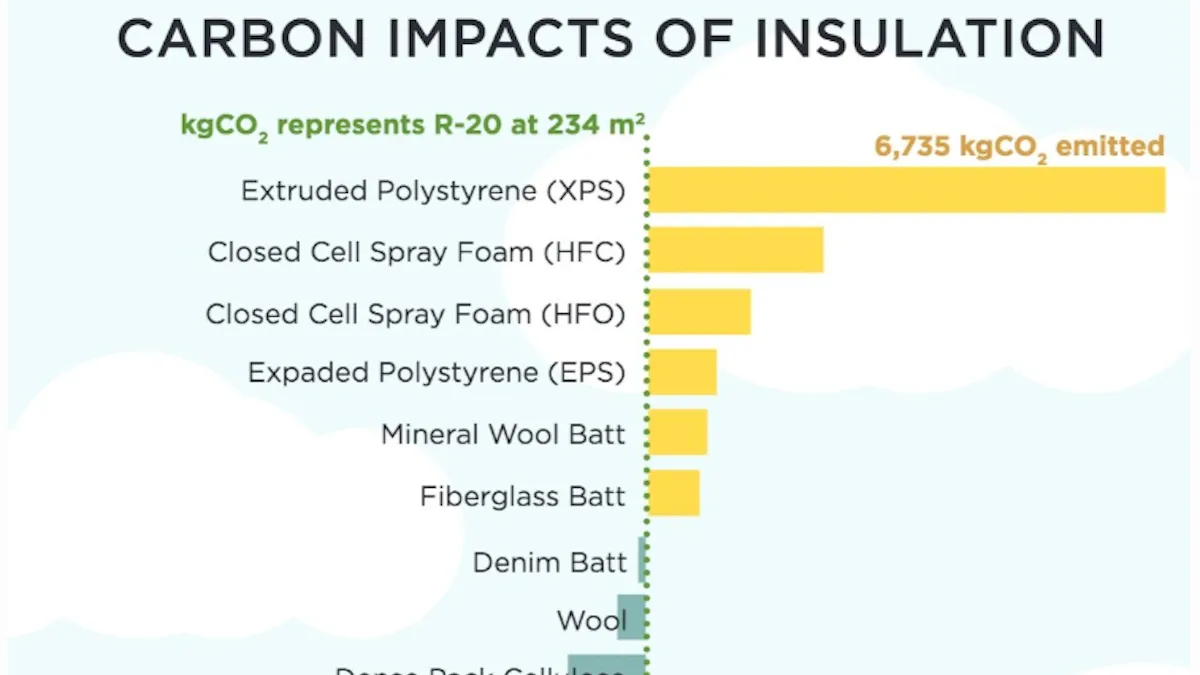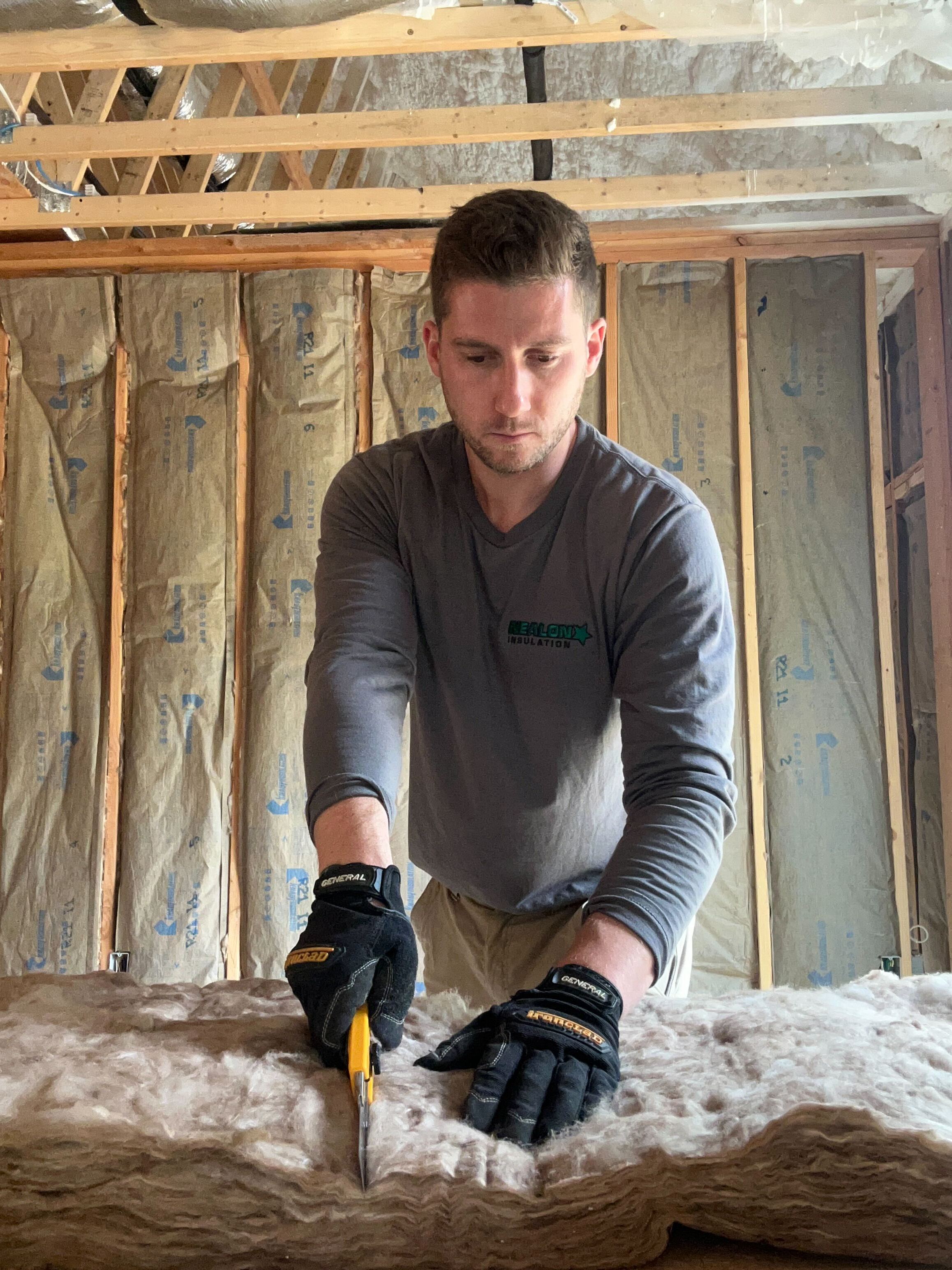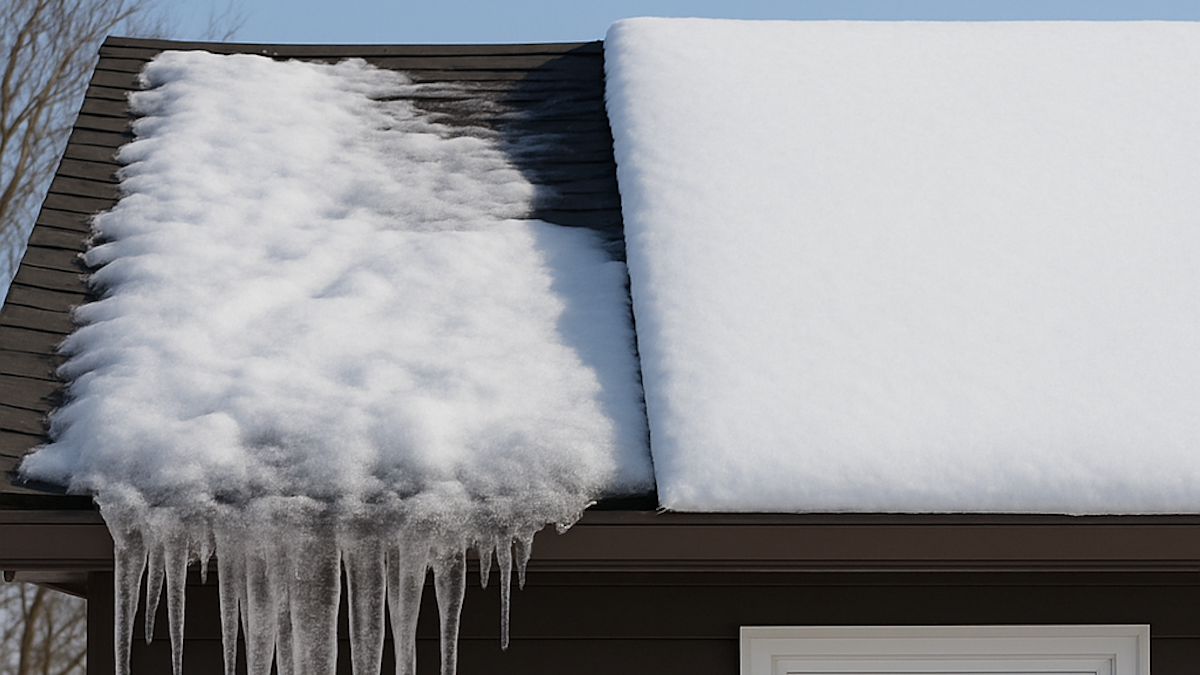What Insulation Reduces Your Carbon Footprint?

Let’s clear something up: insulation isn’t just about keeping your house warm in the winter or cool in the summer. Sure, comfort matters—but what most folks don’t realize is that insulation is also one of the most powerful tools you’ve got to reduce your home’s carbon footprint.
Think about it. Every time your heating or cooling system kicks on, it’s pulling energy. And in most homes—especially older ones—that energy is bleeding right out through poorly insulated attics, walls, crawl spaces, and basements. The result? More energy use, more greenhouse gas emissions, and a bigger hit to both the environment and your wallet.
Now here’s the good news: not all insulation is created equal. Some materials are downright dirty when it comes to manufacturing emissions and disposal. Others—like eco-friendly insulation made from recycled or natural materials—pull double duty by saving energy and being gentler on the planet.
In this post, we’re breaking down the insulation options that actually shrink your carbon footprint, not just your energy bill. Whether you're retrofitting an old shoreline colonial or building something new, this guide will help you insulate smarter, cleaner, and better.
The Link Between Insulation and Carbon Emissions
Here’s the deal: when we talk about a home's carbon footprint, insulation plays a much bigger role than people think. And to understand why, you need to get familiar with two terms—operational carbon and embodied carbon.
Operational carbon is the energy your home burns every day—heating in the winter, cooling in the summer. This is the part you feel on your utility bill. Better insulation means less energy use, which means fewer emissions. Plain and simple.
Embodied carbon, on the other hand, is everything it took to make that insulation in the first place: raw materials, manufacturing, transportation, packaging. Some insulation types are energy hogs to produce (hello, spray foam), while others—like cellulose—are made from recycled materials with almost no carbon debt.
So when you're choosing insulation, it’s not just about how well it performs in your walls—it’s about what it took to get there, and what impact it’ll have over its lifetime.
If you're serious about reducing home emissions, you want insulation that scores high on both fronts:
- Low embodied carbon (less impact upfront)
- High energy efficiency (saves carbon every year it’s in your home)
What Makes Insulation Eco-Friendly?
Not every product that slaps a green label on the bag deserves a gold star. So before we name names, let’s talk about what actually makes insulation eco-friendly.
Recycled or Renewable Materials
Insulation made from recycled newspaper, glass, or plant fibers reduces landfill waste and avoids the need for virgin materials.
Low Embodied Carbon
Some materials require tons of energy to produce. Others, like cellulose, are low-impact from the jump and may even store more carbon than they release.
Air Sealing Power
Insulation that doubles as an air barrier—like dense-pack cellulose or spray foam—slams the door on heat loss and drafty leaks.
Healthy for People and Planet
Look for:
- Non-toxic insulation options
- Zero-VOC insulation
- Naturally mold- and pest-resistant materials
Long-Term Performance
The best sustainable insulation doesn’t sag, mold, or underperform five years in. Choose something built to last.
The bottom line? Eco-friendly insulation saves energy, lasts decades, and doesn’t trash the planet to get installed.
Comparing Insulation Types: Best and Worst for the Environment
Let’s name names. Here's how the most common materials stack up in an eco insulation comparison:
Cellulose Insulation – The Recycled Champ
- Made from: Up to 85% recycled newspaper
- Embodied carbon: Very low—often considered carbon negative
- Air sealing: Excellent when dense-packed
- Bonus: Naturally pest- and fire-resistant
- Verdict: Best all-around for sustainability, performance, and affordability.
Mineral Wool – Durable and Fireproof
- Made from: Natural rock and recycled slag
- Embodied carbon: Medium, due to energy-intensive production
- Perks: Water-resistant, mold-proof, fire-rated
- Verdict: A solid, long-lasting option with decent green cred.
Fiberglass – Reliable, But Middle of the Pack
- Made from: Glass fibers, often with recycled content
- Embodied carbon: Medium
- Concerns: Can irritate skin and lungs, depending on product
- Verdict: Affordable and widely available—but not the greenest.
Spray Foam – Performance Comes at a Price
- Made from: Petroleum-based chemicals
- Embodied carbon: High
- VOC concerns: Very real
- Verdict: Only use when necessary (tight corners, rim joists)—not a planet-friendly choice.
Eco-Friendliness at a Glance
How Much Can You Reduce Your Carbon Footprint?
Let’s talk results.
According to the U.S. Department of Energy, proper insulation can cut your heating and cooling costs by 15–30%. For a typical Connecticut home, that could mean avoiding the use of 100–200 gallons of heating oil per year—equal to 1–2 tons of CO₂ emissions avoided, every year.
Multiply that by 20–30 years of insulation lifespan? You’re looking at 20 to 40+ tons of CO₂ avoided. That’s like:
- Taking multiple gas-powered cars off the road for a year
- Or skipping dozens of Boston-to-DC flights
- Or not eating beef for a decade (if that’s your thing)
Insulation like cellulose starts with a small carbon footprint and keeps saving energy over its lifetime. That’s the long-term win.
Bonus: Natural & Emerging Alternatives
Want to go even greener? These natural insulation alternatives are turning heads:
Sheep’s Wool
Renewable, moisture-regulating, and mold-resistant. It works—and no, your house won’t smell like a barn forever.
Hemp Insulation
Fast-growing, carbon-sequestering, and naturally pest-resistant. Still pricey, but worth watching.
Wood Fiber Board
Great for wall assemblies in Passive House builds. Breathable, compostable, and effective in cold climates.
Mycelium (Mushroom-Based)
Still experimental, but wildly sustainable and naturally fire-resistant.
Cork
Harvested without killing trees. Lightweight, quiet, and highly durable. A solid choice in high-performance homes.
These sustainable insulation materials aren’t everywhere yet—but they’re coming. If you’re building new or doing a deep-energy retrofit, it’s worth exploring.
How to Choose the Right Eco-Friendly Insulation for Your Home
What kind of home do you have?
- Old shoreline colonial? Dense-pack cellulose is retrofit-friendly.
- New construction? Take your pick—just don’t skimp on R-value.
- Damp basement or crawl space? Mineral wool or rigid board all day.
What’s your climate?
In Connecticut, you want high R-value and great air sealing. Cellulose and mineral wool both punch above their weight.
What’s your budget?
- Lowest cost per R Value? Cellulose.
- Premium + natural? Cork, wool, hemp.
- Only for tricky spots? Spray foam—used sparingly.
DIY or professional?
Some products are weekend-warrior friendly. Others need pros with the right gear. Don’t mess up your insulation trying to save $500.
What matters most to you?
- Carbon footprint: Cellulose
- Natural materials: Wool, cork, hemp
- Durability: Mineral wool
- Air sealing performance: Spray foam (but use responsibly)
Choosing environmentally friendly home insulation is about finding the right balance—for your house, your goals, and the planet.
Common Eco-Friendly Insulation FAQ's
What’s the cost difference between eco-friendly insulation and standard options?
Eco-friendly insulation like cellulose is often cheaper than standard spray foam while still offering strong performance. However, natural options such as wool, cork, or hemp can cost more upfront. These materials offer long-term value through durability, healthier air quality, and reduced chemical exposure.
Are there rebates or tax credits for eco-friendly insulation?
Yes, eco-friendly insulation like cellulose may qualify for rebates and tax credits through programs such as EnergizeCT and the federal Inflation Reduction Act. These incentives support energy-efficient upgrades, but proper documentation is required—so work with a contractor who knows the process.
Can I use different insulation materials in different parts of my house?
Yes, you can and should use different insulation materials in different parts of your house. Cellulose is ideal for walls and attics, mineral wool resists moisture in basements, and spray foam seals tight areas like rim joists. Mixing types helps optimize comfort, budget, and energy efficiency.
Does eco-friendly insulation also help with soundproofing?
Yes, eco-friendly insulation like dense-pack cellulose and mineral wool helps with soundproofing. These materials absorb airborne noise better than traditional fiberglass, making them ideal for quieting rooms or blocking outside sounds. They're a smart upgrade for energy efficiency and acoustic comfort in one.
How can I tell if my current insulation is environmentally friendly?
To tell if your current insulation is environmentally friendly, schedule a professional inspection or energy audit. Most insulation types look similar, and older materials often lack eco-certifications. Experts can identify the type, assess its performance, and confirm whether it meets modern sustainability standards or needs replacing.
Final Take: Choose Smart, Insulate Right, Shrink Your Footprint
Insulation isn’t sexy. It’s not a new kitchen or a backyard sauna. But if you're looking for a project that cuts emissions and pays off every month? This is it.
Whether you're retrofitting an attic or insulating a brand-new build, the right material makes a difference. Eco-friendly insulation—especially cellulose or mineral wool—can help you live more sustainably without giving up comfort.
It’s one of the smartest upgrades you can make, and it lasts for decades.
👉 Want help figuring out the best insulation for your home? Contact Nealon Insulation and let’s talk about a smarter, greener way to stay comfortable. We’ll help you insulate right—the first time.
Credit for picture: https://greenmainehomes.com/blog/choosing-the-right-insulation
Related Articles
Let's Work Together
Ready to transform your home into an energy-efficient haven? Schedule your free energy assessment today and experience the Nealon difference for yourself.



